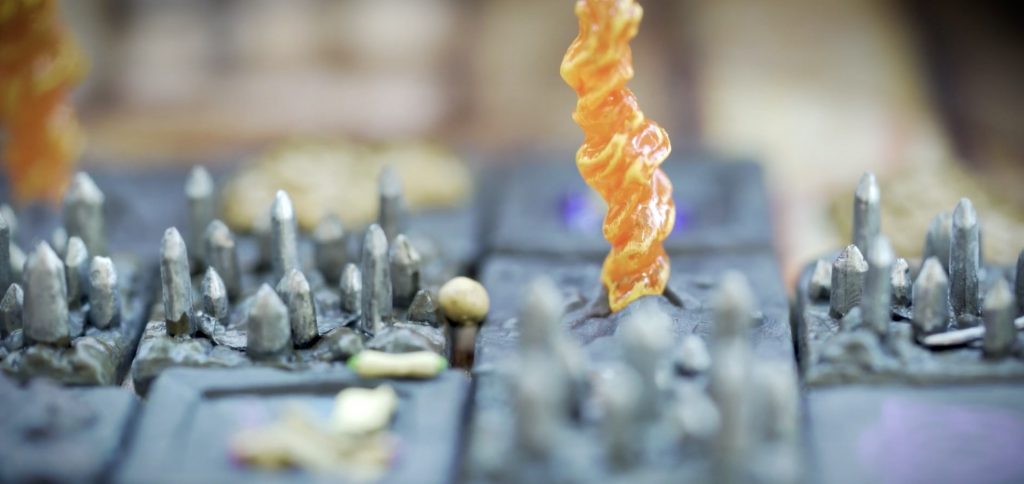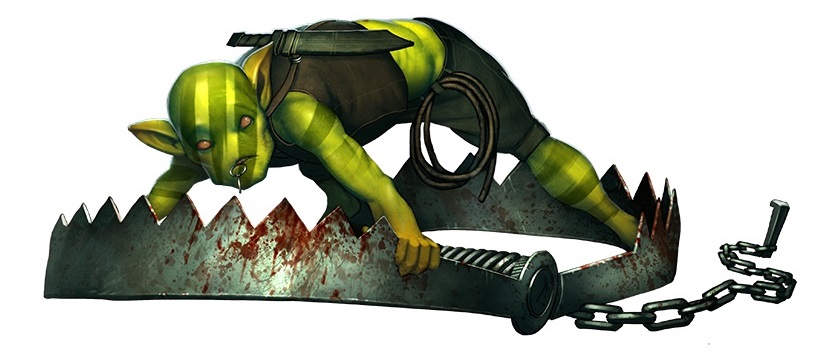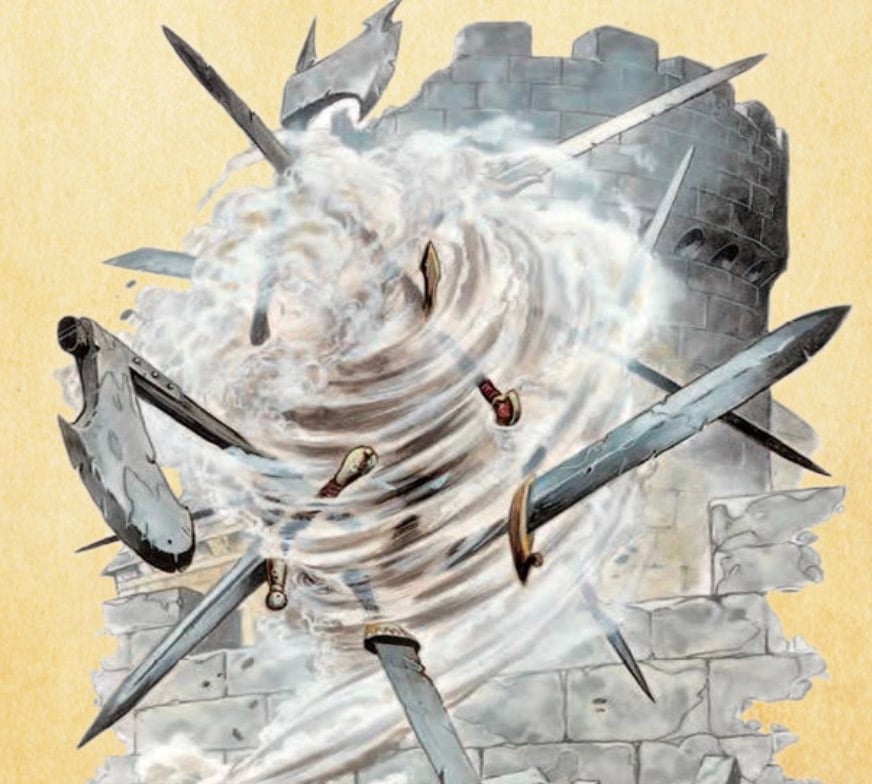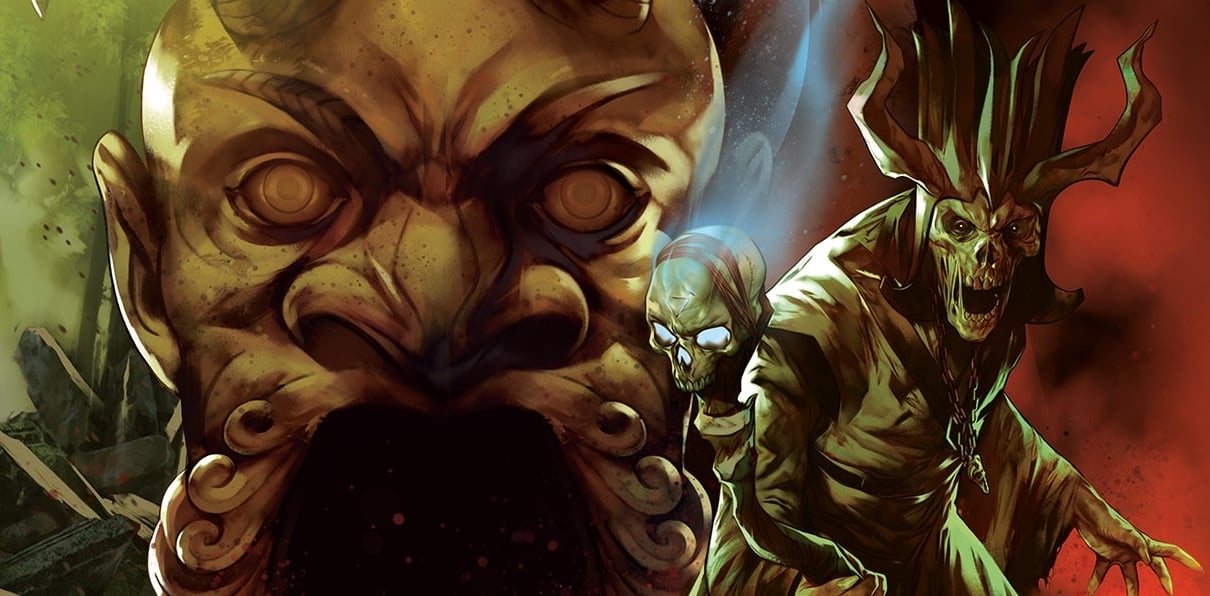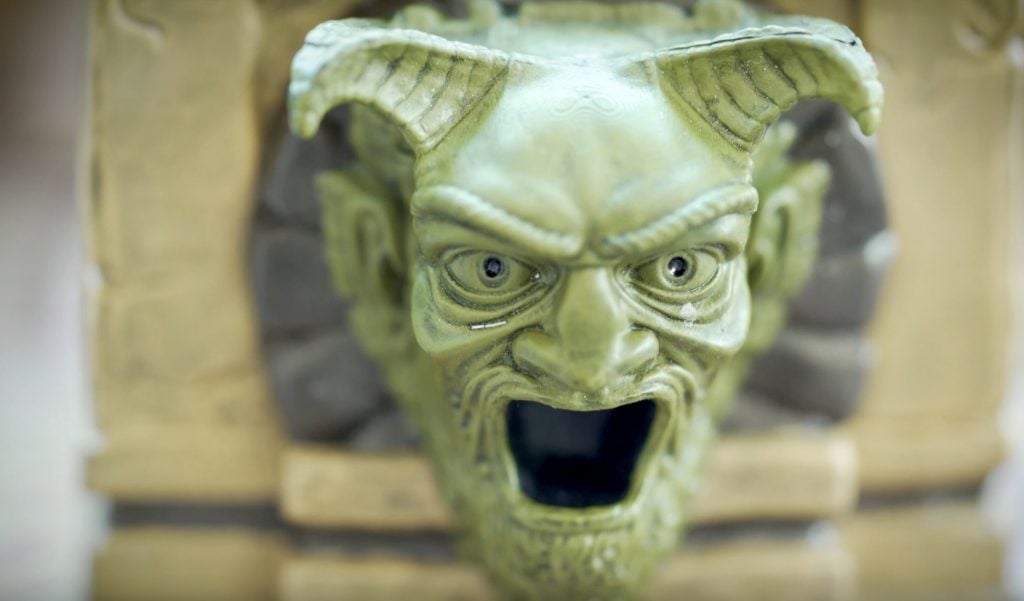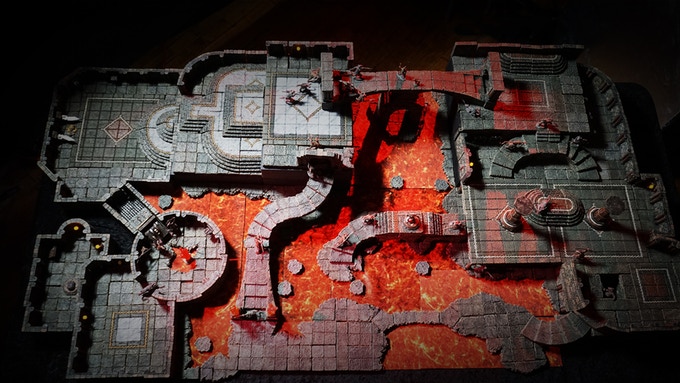D&D: Xanathar’s Guide to Traps Pt. II

Xanathar’s Guide has some pretty sweet rules for treacherous traps. Let’s put them to use.
As we talked about yesterday, Traps can be an important part of any adventure. Whether they’re keeping you from reaching the end of the hallway with all of your hit points, or adding a complication to the fight that you thought was in the bag, traps have a lot to contribute to any encounter, whether combat, exploratory, or even mostly roleplaying. And Xanathar’s Guide has got a sweet suite of rules for designing complex and deadly traps, from scything blades that line a hallway filled with crushing pillars and a rune of fear, to a room full of poison and gas and no escape.
Today we’re going to dig a little deeper into the trap creation rules and look at how traps can fit into whichever of the pillars of D&D you happen to be using at the moment. For now though, let’s look at the components of a trap. We touched on these very briefly yesterday, but since we’re going to design our own trap today, let’s roll up our sleeves and dig in like it’s only the first round of seconds at Thanksgiving dinner.
For reference, we’ll be going through: Purpose, Level/Lethality, Map, Trigger, Active Elements, Constant Elements, Dynamic Elements, Triggers, Initiative, and Countermeasures.
Purpose is arguably the most important element of any trap. This is going to be how you use the trap–is it there to protect something? Is it an alarm of some kind as well? Is it there to kill intruders, or to stand in for the power of a long-absent deity who has abandoned the idol on the altar, about which are strewn the dead bodies. Basically, take a minute to figure out how this trap fits in with everything–it’s cool if you don’t necessarily have this at first. I’ve found that once you know what a thing is, it can be fun to try and reverse-engineer it’s purpose and let the “real world” historicity of it get shaped after the fact. This leads to things like a murder hallway that nobody uses anymore (which is of course the secret entrance that the PCs crawl through). And so on.
But I’d add a second point to consider here. As the book says, it’s important to know why the trap exists in your world–but it’s even more important to know why you want this trap to exist in your game. Is the trap there to delay the players, is it there to threaten them, or is it there to try and send them to a different spot? Basically think about what you want your players to do because of it (and realize they will instinctually do the exact opposite).
Level and Lethality are both pretty simple. How powerful is it. How deadly is it. These correspond to charts in both the DMG and Xanathar’s Guide that help you figure out how much damage should be used. Lethality comes in three flavors, moderate, dangerous, and deadly.
Map — now this one really got me thinking. In Xanathar’s Guide, they mention not just where a trap is in the Mao, but how much room it occupies. And then they suggest that a complex trap can be asked across multiple rooms–and it brought to mind the game Evil Genius where you design hallways that push people through multiple traps. Doors might lock, leaving characters trapped in the line of fire for poisonous darts or acidic slime slowly begins to fill the room, brought in from an adjacent chamber. A good trap can be an environment unto itself.
Trigger is what sets off the trap. These can be simple affairs like a trip wire or pressure place, but magic is also an important tool in the toolbox of any good trap designer. This lets you set things up like “when a player enters an area.” For added fun, Xanathar’s Guide points out that complex traps can have multiple triggers. This lets you set up cascading effects–which again can be good times. Think of the moment before the spikes come out in the hallway of the Temple of Doom. Then the spikes come out. And then the room starts to crush them. Each trigger can be a beat of an encounter. It comes back to purpose (as most things will, honestly), but think about how the trap is supposed to feel. What else can you fit in between the triggers going off? If your characters get trapped in a sealed hallway, will they argue with each other, roleplay? What can you prompt them to do before things get worse? There’s nothing wrong with a rapidfire succession of bad to worse either, but consider which you want.
Active Elements these are the bits of the trap that are actually getting the work done. Spikes. Blades. Jets of acid or fire. Poison. One of the things I particularly like about the sample traps in Xanathar’s Guide is that these can be variable. This is important, because complex traps are meant to function a bit like a legendary encounter, in that characters should spend more than a round or two dealing with them–and this allows for a little variety. It’s easy to explain away too in a world with magic–an idol might produce effects that change as it rotates on a pedestal, with an aura around it, and a deadly dessicating effect while standing within the area directly in front of its eyes, it’s horrible, soulless eyes.
Constant Elements are effects that happen round to round, outside of the trap’s initiative count(s). These are effects that trigger on the end of a creature’s turn if certain conditions are met–like the creature ending its turn in a certain area, or two or more creatures being within five feet of each other. Xanathar’s Guide suggests a puzzle element to these effects–let players try and figure out where the safe areas are and how to avoid the constant effects–it’s a good exploration reward.
Dynamic Elements are changes that happen as the rounds progress. Whirling blades slice faster as they shouted up, acid from an adjoining chamber is pumped into a room, a whole series of chambers with raised platforms begins flooding, making players swim where once they walked. These are also a way too keep your traps from getting too predictable. If the players know to stand outside of the swinging blades arcs, they present a target to the electrified sections of the floor, and so on. Dynamic elements are a chance to change how the trap works midway through.
Initiative is pretty straightforward. Traps don’t roll but instead go on 20, 10, or 20 and 10.
Countermeasures are the steps needed to disarm/disable/avoid a trap. Like the attacking elements of the trap, you’ll want to consider where the characters need to stand in order to deactivate certain elements. As a rule, each element should take multiple checks to disarm, again, wanting to keep players focused on deactivating the traps–stopping one of these complex traps should feel like an endeavor. Xanathar’s Guide even recommends not keeping characters rapid-fire repeat checks, instead suggesting that after a given character succeeds on a check, that same can’t be repeated until the end of the successful character’s next turn.
Phew. Still with me? Let’s design our own. So to start with, let’s consider why you might use a trap. We talk about it in terms of traps protecting things–but all this talk of environments puts me in mind of a set piece battleb that characters might fight in, contending with their foes AND the world itself. So let’s do that. Let’s build a lava trap within a temple.
To start with, we know that the purpose of the trap is partly to reward exploration and clever thinking, while also adding more danger and dynamics to a combat encounter. We want to make this challenging, but not murderous, so let’s set the lethality at Dangerous. This means an average DC of about 15, or gives a +8 bonus to attack rolls made by the traps, and will do about 10d10 damage.
The trap is meant to be as set piece battle type thing, so now to the fun part, interlocking the systems. The main attraction here is the lava. Let’s say the trigger for the trap is when one or more creatures approach the temple’s center. First a glowing time appears on all the doors, and then lava begins to flow from the altar.
Characters caught in the lava have a DC 15 Dex save or they take 10d10 fire damage. The lava can be avoided by touching the altar from whence it flows. But as characters back away from the lava, they run into the spearing floor section, which is a +8 attack bonus as spears jut out from nearby decorative pillars. Characters hit take 8d6+4 damage, and can ready an action to disarm a spear. Finally the altar itself, whole providing immunity to the lava, has a baleful aura around it that slows the movement speed of characters within 15 feet of it by half. A DC 15 religion check can temporarily suppress this effect while also slowing the spread of the lava.
And of course, characters will be fighting an evil priest and minions amidst all this lava.
That’s your guide to traps, if you use it, you’ll want to brush up on your Admiral Ackbar impersonation…


